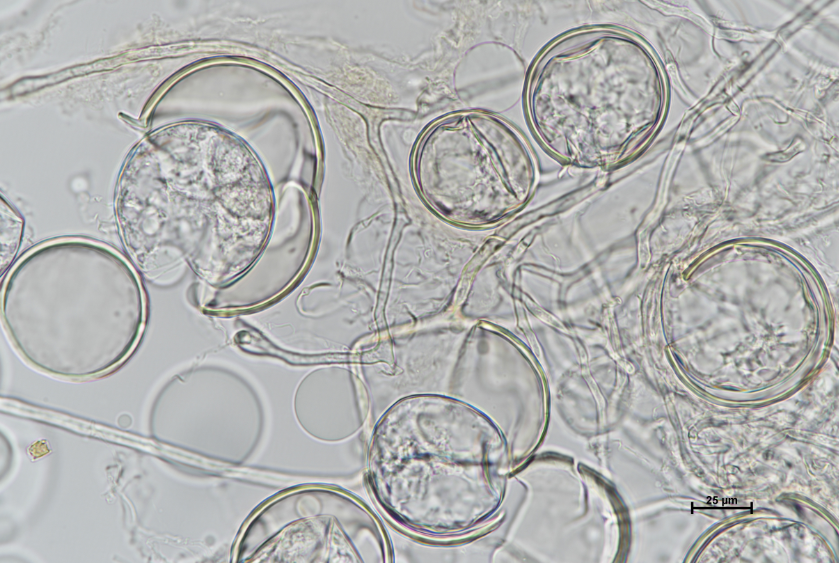Group Feed
-
Geoff Whistler replied to the discussion Moving Molasses! in the forum Make Your Own Biological Inputs 9 months ago
Thank you to you both.
I’ll be transferring what I require for the particular batch so will now be looking for a hand pump and then doing it on a warm day!
Using the smaller volume containers will be the easiest option in the future.
Geoff
-
Lower Blackwood LCDC replied to the discussion Moving Molasses! in the forum Make Your Own Biological Inputs 9 months ago
Are you talking about transferring the whole drum or just what you need? Either way it does pour fairly easy when warm (ie on a warm day) but there will be a bit of residue left inside the drum. If you leave it upside down to drain into something most of it should come out.
-
Brett Hazelden replied to the discussion Moving Molasses! in the forum Make Your Own Biological Inputs 9 months ago
Geoff- I have stuck with using the 20kg drums to make it a bit easier. All I could suggest is a hand drum pump. There are different versions for fuel, oil, chemicals etc. but the viscosity will be the key driver
-
Geoff Whistler started the discussion Moving Molasses! in the forum Make Your Own Biological Inputs 9 months ago
Hi All,
I’m about to start the process of ‘growing’ my own Bio-Fertiliser. I have no experience in handling molasses and will be wanting to transfer from a 200L drum to an IBC.
Considering the viscosity of the molasses, does anyone have some practical ideas for achieving this?
Appreciate your help,
Geoff
-
Brett Hazelden posted an update in the group
 Make Your Own Biological Inputs 10 months ago
Make Your Own Biological Inputs 10 months agoHappy new year to all
We brought the farm a Xmas present this year being a Tow and Fert 500 litre foliar spray trailer. Has a single spray nozzle that can handle up to 3mm particles with a 8-10m spray width.
It’s probably on the small side for us but will spray out the 500 litres across 2-3ha in about 20 minutes. I managed to get two loads out in…
Rebecca Archer, Kate Tarrant and 3 others5 CommentsView more comments-
Will be interesting to see how the pasture responds. Let us know how it goes.
-
Now I’m really jealous.. looks so much better than my sprayer!!
- View more comments
-
-
Geoff Whistler posted an update in the group
 Make Your Own Biological Inputs 11 months ago
Make Your Own Biological Inputs 11 months agoHi, I’m new to this group, but was at the recent David Hardwick workshop for making Bioferments. I plan on making biofertilisers (as soon as I get my soil analysis results back from EAL) but would like to know if anyone has experience at applying either through spraying (foliar) or soil injecting and which is the more effective when it comes…
-
Hey Geoff,
I have made and applied bio fertilisers to the soil and plants. It is a big ask to expect any input to significantly change the soil biological status on its own without applying very large quantities. If however, they are used strategically to improve plant growth then the plants will provide a more lasting source of food for…
- View 2 replies
-
Hi Geoff, check out the article that’s just been published in the Knowledge Bank.. written by Mark. Some great information to help you on this topic.
- View 1 reply
-
-
Brett Hazelden posted an update in the group
 Make Your Own Biological Inputs 11 months ago
Make Your Own Biological Inputs 11 months agoA few progress photos on the Johnson Su mix.
Has definitely compressed as it breaks down given it was all the way to the top of the cage when we started it on the 8 October.
It gets a daily 2 minutes of water at 6pm each day using the auto retic sprinklers.
Have added some worms to it a few weeks ago too to help with the process
-
Vincent Poncini posted an update in the group
 Make Your Own Biological Inputs 12 months ago
Make Your Own Biological Inputs 12 months agoGood evening. Vince Poncini here. I have joined Lower Blackwood LCDC recently. However I have listened to the LCDC podcasts at least twice, not to mention other podcasts from Dr Christine Jones, Joel Williams, Nicole Masters and Mark Tupman.
I have a question –
has anyone compared the results from the Johnson Su bioreactor and from… Read more-
Hi Vince,
A reliable metric can be to view samples under the microscope and identify/count biology viewed. We have a microscope here at TAFE you could use. You can email me at [email protected]
- View 1 reply
-
G’day Vince
You may find this useful and relevant specifically the maturity pattern of compost. Personally I use vermi compost products because a constant flow through bin seems to work for me tending and interacting with it.
- View 3 replies
-
-
Brett Hazelden posted an update in the group
 Make Your Own Biological Inputs a year ago
Make Your Own Biological Inputs a year agoWe have managed to source some cheaper seconds mulies for $2/kg – see photo. Much more cost effective!
So we have put 15 x 20kg boxes into a 1,000 litre pod to make a fish hydrolysate plus water, molasses and the base culture.
The ones that were made on farm with David Hardwick used a minced up burley block of Mulies which have gone well and…
-
It’s all a bit fishy!😅
-
A quick update – the fish bodies have all broken down with only the bones still around. Needs a stir every few weeks to help keep the process going which gets it bubbling again for a day or two. Smell wise it’s not sweet but it’s not like awful rotting fish either – just slightly unpleasant on the nose. Not to bad for 6 weeks of fermentation.
-
-
Brett Hazelden posted an update in the group
 Make Your Own Biological Inputs a year ago
Make Your Own Biological Inputs a year agoa year ago (edited)
A couple of photos of the humate and seaweed drums, plus a patch that got a heavy spray whilst we adjusted the spray unit. You can see a solid brown stain on the grass from the extract mix. Maybe we will see super bacteria, fungi and microbes in this area 😬.
Should say if you have a fine screen in the spray unit it will block it up straight…
-
You are welcome Brett.. let’s hope the Johnson Su does it’s job!😁
-
- Load More



